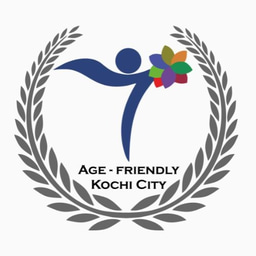Creating Joy and Inclusivity: A Guide to Senior-Friendly Community Activities
Create a senior-friendly community that promotes joy, inclusivity, and a sense of belonging for all members
COMMUNICATION AND INFORMATION
Ebin P Benny
4/30/20244 min read


Creating a vibrant, inclusive community that caters to seniors involves thoughtful planning and engagement strategies. This guide explores a variety of activities designed to ensure that our elder community members feel valued, engaged, and joyful. Here's how we can cultivate an environment ripe with opportunities for fun, laughter, and connection, making every senior feel right at home.
1. Building a Socially Inclusive Environment
The foundation of a senior-friendly community is its inclusiveness, ensuring everyone has the opportunity to connect and participate. Let's explore how we can build this foundation effectively.
Host Regular Meet-and-Greets: Monthly welcome events are essential in making new members feel included. It's an opportunity for everyone to meet in a relaxed, informal setting, encouraging the formation of new friendships.
Create Interest-Based Clubs: Variety is the spice of life, and catering to a range of interests ensures there's something for everyone. Whether it's a gardening club, a book discussion group, or a chess club, these groups give seniors a chance to engage in activities they are genuinely passionate about, enhancing their joy and sense of belonging.
Promote Volunteer Opportunities: Empowering seniors by encouraging them to lead activities or volunteer within the community fosters a sense of purpose and contribution. This not only benefits the community as a whole but also bolsters the individual’s self-esteem and happiness.
2. Encouraging Physical Activity
Physical activity is key to maintaining health and wellbeing, especially in later years. Here’s how we can incorporate it into our community activities.
Gentle Exercise Classes: Offering classes like yoga, tai chi, and water aerobics, tailored for various fitness levels, emphasizes the importance of staying active as one ages. These classes are not just about movement; they're a social occasion and a source of joy and relaxation for many seniors.
Walk and Talk Groups: Combining physical activity with social interaction, these groups provide a wonderful opportunity for seniors to stay active while exploring their local area and forming stronger social bonds.
Senior Sports Leagues: Less intensive sports leagues such as bowling, golf, or even table tennis offer a competitive yet fun way to remain active. They cater to the natural human desire for challenge and achievement, making physical activity a joy rather than a chore.
3. Creative and Educational Pursuits
Nurturing the mind and creativity plays a significant role in overall happiness and fulfillment. Here are some ways to foster these aspects within the senior community.
Arts and Crafts Workshops: These workshops allow seniors to express themselves creatively, whether through painting, pottery, or crafting. Engaging in creative activities has been shown to enhance emotional health and provides a sense of accomplishment.
Lifelong Learning Classes: Offering lectures and courses on a variety of topics caters to the intellectual curiosity of seniors. From history to technology, these classes can provide mental stimulation and a sense of ongoing growth and development.
Performing Arts: Participation in or attendance at musical, theatrical, and dance performances can greatly enrich a senior’s life. It’s an opportunity to either rekindle a former passion or develop a new one, connecting with others who share similar interests.
4. Fostering Connection with Technology
In today’s world, being digitally savvy can significantly enhance a senior’s quality of life by keeping them connected and engaged.
Tech Tutoring Sessions: Offering classes on using smartphones, the internet, and social media can help bridge the digital gap, empowering seniors to connect with their families and the world.
Virtual Reality Experiences: VR sessions that allow seniors to 'travel' to distant places, attend concerts, or revisit cherished places from their youth offer incredible joy and can be a meaningful escape from everyday life.
Online Gaming and Social Clubs: These platforms offer unique ways for seniors to engage with peers and family members, fostering connections across distances and generational divides.
5. Ensuring Accessibility and Inclusion
True inclusivity means making sure everyone can participate, regardless of physical or sensory limitations.
Transportation Services: Providing adequate transportation options ensures that all seniors can attend events and activities without the hassle, making them feel valued and included.
Hearing and Visual Aids: Having assistive devices available makes events more accessible and enjoyable for those with sensory impairments, ensuring nobody is left out.
Culturally Diverse Activities: Activities that reflect the cultural richness of the community promote inclusiveness and allow for the sharing of traditions and stories, enriching everyone's experience.
Summary
Creating a fun and inclusive community for seniors is about offering a diverse range of activities that cater to various interests, abilities, and backgrounds. It's imperative that these activities not only entertain but also foster social connections, encourage continued learning, and promote physical well-being. By implementing the aforementioned strategies, we can ensure our senior community members lead joyful, fulfilling lives.
FAQs
Q: How can I find out what activities are available in my community?A: Check local community centers, newsletters, and websites for information on upcoming activities tailored to seniors.
Q: What if I have an idea for a new activity or club?A: Most communities welcome new ideas! Reach out to your community coordinator or the person in charge of senior activities to discuss your suggestion.
Q: Are there activities for seniors with limited mobility?A: Yes, many communities offer activities designed to be accessible to those with varying levels of physical ability, including seated exercise classes and crafts.
Q: How can I get involved in volunteering to help with senior activities?A: Contact your local senior center or community organization to learn about volunteering opportunities. There's often a need for help in organizing events, teaching classes, or providing transportation.
